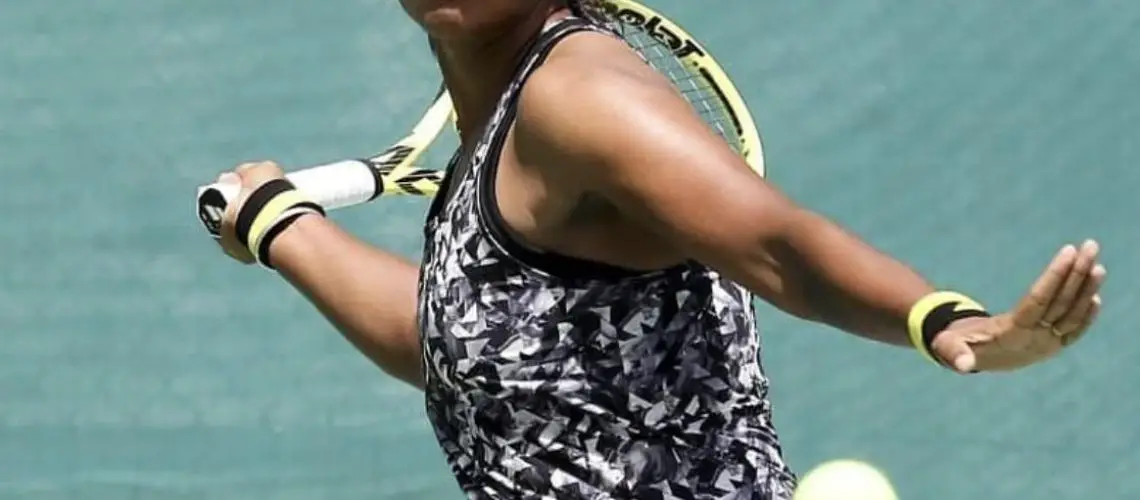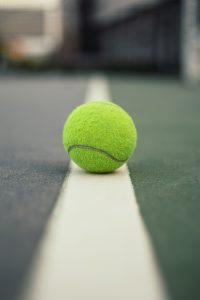We may earn money or products from the companies mentioned in this post.
Introduction

In the fast-paced game of tennis, every detail matters, and one crucial element that often goes unnoticed is the tennis ball These little spheres of rubber have a significant impact on the outcome of matches, making them an essential component of the sport Understanding when and why tennis balls are changed during a match can provide valuable insights into the dynamics of the game
A Brief Overview of Tennis Balls and Their Importance in the Game
Tennis balls may seem like simple objects, but they play a vital role in determining how a match unfolds They enable players to execute various shots with precision and control The right bounce, spin response, and durability are all critical factors that can significantly influence player performance
The International Tennis Federation (ITF) sets specific regulations for tennis balls to ensure consistency across tournaments These regulations dictate factors such as size, weight, compression, and rebound characteristics
Factors Affecting Ball Change Frequency
Several factors influence how often tennis balls are changed during a match:
-
Type of Tournament:
Different types of tournaments have varying rules regarding ball change frequency For example, in Grand Slam events like Wimbledon or the US Open, fresh balls are used for every match In contrast, smaller tournaments may allow for longer use before changing balls -
Surface Type:
The type of surface also affects how quickly tennis balls deteriorate On clay courts, which tend to be slower surfaces with more friction between ball and court, balls wear out faster compared to hard or grass courts -
Match Duration:
As matches progress over time, especially intense five-set battles or long rallies filled with heavy hitting exchanges; it puts greater strain on tennis balls The constant impact and friction gradually wear down the felt covering, reducing their performance and consistency
By considering these factors, tournament organizers, players, and coaches can make informed decisions regarding ball change frequency during matches This ensures fairness and maintains a level playing field for both competitors
Grand Slam Tournaments: Ball Change Rules

When it comes to the world of tennis, few events hold as much prestige and excitement as the Grand Slam tournaments These four major championships – the Australian Open, French Open, Wimbledon, and US Open – bring together the best players from around the globe But have you ever wondered about the rules surrounding something as seemingly simple as changing the tennis balls? Let’s dive into the ball change rules for each Grand Slam event
Australian Open
The Australian Open, held annually in Melbourne, kicks off the Grand Slam season with a unique set of ball change rules Typically, a new set of balls is introduced after every nine games played This ensures that both players have access to fresh balls at regular intervals throughout each match
However, there are additional considerations for tiebreaks and warm-ups In a tiebreak situation, a new set of balls is used at the start of each tiebreak game As for warm-ups before a match, players are allowed to use six balls for hitting practice – three on their own side and three on their opponent’s side
French Open
The clay courts of Roland Garros play host to another thrilling chapter in tennis history during the French Open Here, things work slightly differently when it comes to ball changes The rule states that each set must begin with a new set of balls
In terms of timing, if seven or more games are played within 90 minutes since the start of play or since any previous ball change (whichever is later), then a new set of balls is introduced at that point This ensures that players have access to fresh equipment regularly throughout their matches
Wimbledon
The oldest tennis tournament in the world, Wimbledon, held in London, has its own set of ball change rules For this prestigious event, a new set of balls is introduced after every seven games played
Interestingly, in the event of a tiebreak situation at Wimbledon, players continue to use the same balls that were in play during the previous game This adds an additional layer of unpredictability and challenges the players to adapt their strategies accordingly
US Open
The US Open, held annually in New York City, wraps up the Grand Slam season with its own unique ball change rules In this tournament, a new set of balls is introduced after every nine games played
Similar to Wimbledon’s approach, if a tiebreak occurs at the US Open, players continue using the same balls from the preceding game Additionally, during warm-ups before a match begins, each player is provided six balls for practice – three on their side and three on their opponent’s side
Reasons behind these specific rules within Grand Slam events

The ball change rules within each Grand Slam event serve specific purposes that align with tradition and fairness By introducing fresh tennis balls at regular intervals or at key moments like tiebreaks, these tournaments ensure consistent playing conditions for all participants
Frequent ball changes help maintain optimum performance levels by preventing excessive wear and tear on the equipment Moreover, it ensures that both players have equal opportunities to showcase their skills with fresh and consistent balls throughout each match
The variations between tournaments also add excitement and strategic elements to the game For instance, continuing to use the same balls during tiebreaks challenges players to adapt their shots accordingly based on how worn out or lively those particular balls are
In conclusion (Please remove), understanding the ball change rules for each Grand Slam tournament sheds light on the meticulousness and attention to detail that goes into creating a fair and thrilling playing environment for tennis enthusiasts worldwide
Tennis Ball Wear & Tear: Effects on Game Play

When it comes to the game of tennis, the quality of the tennis balls used can greatly impact the overall performance and experience As players engage in intense rallies and powerful shots, tennis balls endure significant wear and tear In this article, we will explore how this wear and tear affects game play, why worn-out tennis balls are replaced, and the role that different surfaces play in determining how often balls should be replaced
Types of Tennis Balls & Their Construction
Before delving into the effects of wear and tear on game play, it’s important to understand the different types of tennis balls available and their construction Tennis balls are typically categorized into three main types: pressurized, pressureless, and foam
Pressurized Tennis Balls:
These are the most commonly used type of tennis ball in professional matches and recreational games alike Pressurized with air, these balls have a hollow core surrounded by a rubber shell The internal pressure gives them their characteristic bounce
Pressureless Tennis Balls:
Unlike pressurized balls, pressureless ones do not have a hollow core filled with air Instead, they are made from solid rubber or felt material These balls maintain their bounce without relying on internal pressure
Foam Tennis Balls:
Foam tennis balls are specifically designed for beginners or young children learning to play tennis They have a softer texture and reduced speed compared to regular tennis balls
How Wear & Tear Impacts Performance During a Match
The wear and tear that occurs during a match can affect several aspects of game play As tennis balls get used over time, their outer felt covering begins to deteriorate This leads to a decrease in the ball’s grip on the court surface, resulting in less spin and control for players
Additionally, worn-out tennis balls tend to lose their bounce The fibers in the felt covering become compressed, reducing the ball’s ability to rebound off the ground effectively This can make shots feel slower and less lively, impacting both offense and defense strategies
Furthermore, as tennis balls wear down, they may also develop irregularities on their surfaces These imperfections can cause unpredictable bounces, making it challenging for players to anticipate and adjust their shots accordingly
Reasons Why Worn-Out Tennis Balls Are Replaced
Tennis balls are replaced when they reach a certain level of wear and tear The primary reasons for replacing worn-out tennis balls include maintaining consistent game play conditions and ensuring fair competition
Worn-out tennis balls that have lost their bounce or grip can significantly alter the dynamics of a match By replacing them at regular intervals, players can enjoy a more predictable and fair playing experience This is especially crucial in professional matches where consistency is paramount
The Role of Surfaces in Determining How Often to Replace Balls
The type of playing surface also plays a significant role in determining how often tennis balls should be replaced Different surfaces have varying levels of abrasiveness that impact ball wear and tear
In general, hard court surfaces like concrete or asphalt tend to be more abrasive compared to clay or grass courts As a result, tennis balls used on hard courts may wear out more quickly due to increased friction with the surface
Certain tournaments or clubs may have specific guidelines regarding ball replacement based on surface type This ensures that players always compete with fresh balls that provide optimum performance regardless of the playing conditions
Other Relevant Aspects Regarding Tennis Balls in Professional Matches

Role of ball boys/girls in maintaining the flow of the game with fresh balls
In the fast-paced world of professional tennis, every second counts This is where the unsung heroes of the court come into play – the ball boys and girls These agile youngsters are responsible for ensuring that the game flows seamlessly by providing players with fresh tennis balls whenever needed With lightning-fast reflexes and impeccable timing, they sprint across the court, retrieving used balls and swiftly replacing them with pristine ones
Their crucial role not only keeps the game moving smoothly but also helps maintain its intensity By delivering a new ball promptly, they eliminate any possible delays or interruptions, allowing players to maintain their rhythm and focus on their strategies The skillful coordination between players and ball boys/girls is a testament to their dedication and commitment to keeping matches at peak performance
Environmental considerations – recycling or repurposing used tennis balls
While tennis matches may be thrilling spectacles for fans worldwide, it’s important to acknowledge the environmental impact of these events as well Thousands of tennis balls are used during professional tournaments, which raises concerns about waste management and sustainability
To address this issue, many initiatives have been implemented to recycle or repurpose used tennis balls Some organizations collect worn-out balls and convert them into surfaces for playgrounds or sports courts, reducing landfill waste while creating recreational spaces for communities
Additionally, efforts are underway to explore innovative ways of reusing materials from old tennis balls From fashion accessories to pet toys, creative individuals find ingenious ways to give these retired spheres a new lease on life after their time on center court has come to an end
Brand preferences and sponsorships among tournaments
In the world of professional tennis, brand preferences and sponsorships play a significant role in shaping the sport’s landscape Tennis balls are no exception to this trend, with various tournaments showcasing specific brands as part of their partnerships
While different tournaments may have their preferred ball brands, the International Tennis Federation (ITF) has strict regulations regarding the specifications and quality standards for tournament-approved tennis balls This ensures a level playing field for all players, regardless of the specific brand used during matches
However, it’s not uncommon for players to have personal preferences when it comes to tennis balls Some may favor a particular brand due to its bounce or durability, while others may find comfort in using a familiar ball that they have had success with in the past These personal choices often influence players’ decisions when selecting equipment for practice sessions or matches
Conclusion

In conclusion, this article has explored the intricacies of ball change rules in various sports and their significance for both players and spectators We began by discussing the concept of ball change and how it is implemented in different games such as basketball, soccer, and tennis We then delved into the reasons behind these rules, including fairness, strategy, and safety
Throughout the article, we highlighted the importance of understanding ball change rules as a player or spectator For athletes participating in these sports, knowing when a ball change occurs can significantly impact their gameplay and decision-making It allows them to adapt their strategies accordingly and seize opportunities that arise from a changed ball
Moreover, as fans watching these sports events, being aware of ball change rules adds depth to our understanding and enjoyment of the game It allows us to appreciate the nuances of gameplay dynamics when a new ball is introduced Whether it’s witnessing an unexpected shift in momentum or marveling at how players adjust their tactics with a different ball type, understanding ball change rules enhances our overall experience as spectators
Therefore, whether you’re an athlete or a fan, familiarizing yourself with the specific regulations surrounding ball changes in your chosen sport is crucial It not only ensures fair play but also enables you to fully immerse yourself in the excitement and strategy that comes with each altered sphere
Useful Links

How Many Tennis Balls Are Used In A Match?
How Long Do Tennis Balls Last?
Noob question: How long do tennis balls last before …
Why do tennis players check the ball before serving?
How often are tennis balls changed at Wimbledon? –
How Long Do Tennis Balls Last?
How Often Do They Change Balls in Tennis?
All You Need To Know About The Past, The Present And …
HOW LONG DO TENNIS BALLS LAST UNOPENED …
BBC Sport Academy | Tennis | Features | Having a ball at …
How the Humble Tennis Ball Has Helped Change the Game
Bigger Balls May Slow Tennis Matches
How many balls do they use at the US Open?
Do Fresh Balls Bounce Better?
Here’s why Wimbledon uses 55000 tennis balls a year
The Great U.S. Open Ball Debate of 2022
Tennis explained: Learn the game
Are ‘fluffier’ tennis balls causing longer matches at the …






